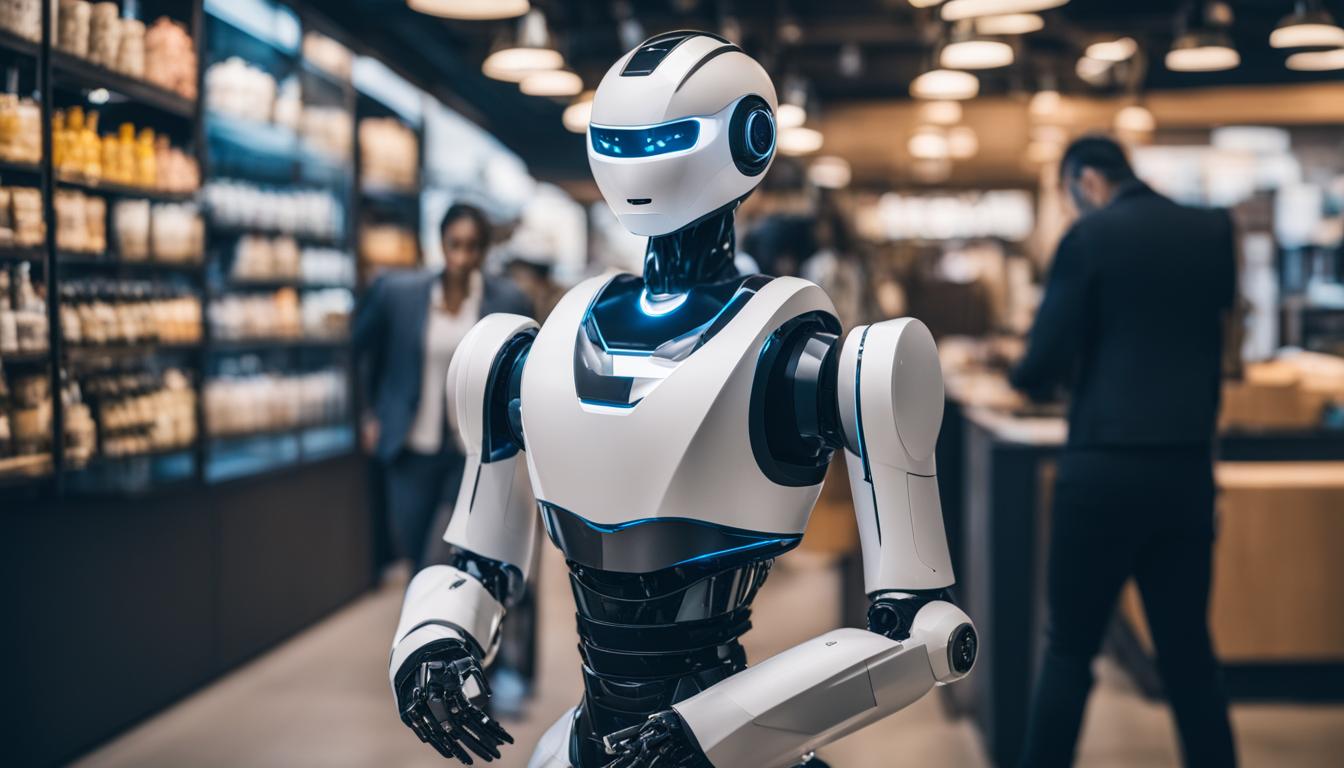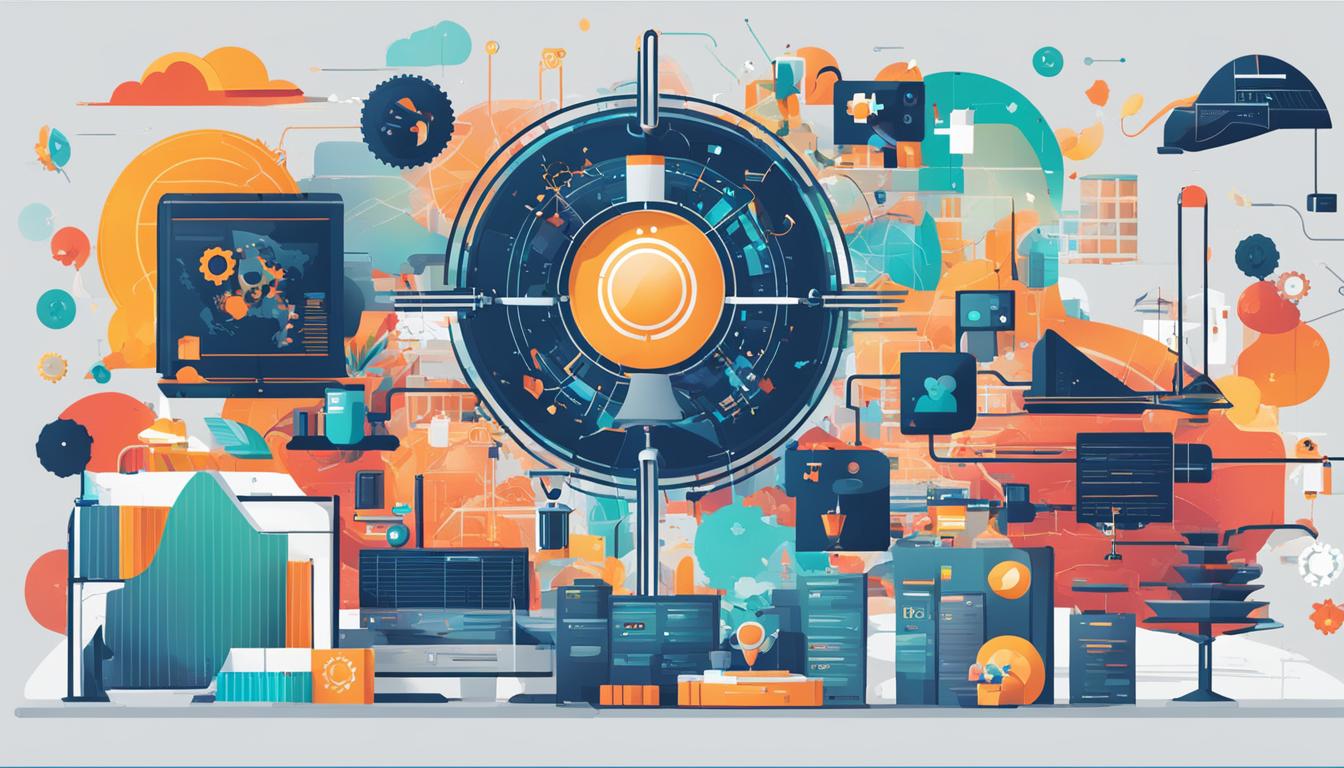AI for predictive equipment failure analysis uses sensor data and historical records to forecast faults before they happen. It detects anomalies like vibrations or temperature spikes early, helping you schedule maintenance proactively. By analyzing real-time and past data, AI models learn normal patterns and identify deviations quickly. This approach reduces downtime, cuts costs, and improves safety. If you want to discover how this technology can transform your operations further, there’s more to explore below.
Key Takeaways
- AI models analyze sensor data to detect early signs of equipment failure and prevent unexpected breakdowns.
- Machine learning learns normal machine behavior over time to identify deviations indicating potential issues.
- Data preprocessing ensures high-quality inputs, improving the accuracy of failure predictions.
- Computer vision enhances inspections by identifying cracks, corrosion, and other defects visually.
- Predictive maintenance reduces costs, minimizes downtime, and improves safety across various industries.

Have you ever wondered how industries prevent unexpected equipment failures and costly downtime? The answer lies in the power of AI-driven predictive maintenance. Unlike traditional methods that rely on scheduled checks or reactive fixes, AI analyzes real-time and historical data to forecast failures with remarkable speed and accuracy. It continuously monitors critical machinery, especially equipment whose breakdown could lead to expensive shutdowns or safety hazards. By generating actionable insights from machine condition data, AI helps maintenance teams intervene precisely when needed, reducing unnecessary servicing and avoiding catastrophic failures.
AI’s capabilities extend beyond simple monitoring. Machine learning models sift through vast amounts of data—collected from sensors measuring temperature, vibration, pressure, and other operational parameters—to detect anomalies that might indicate impending trouble. These models learn the normal behavior of specific equipment over time, allowing them to spot subtle deviations that humans might overlook. Computer vision and deep learning further enhance this process by inspecting machine components visually, identifying cracks, corrosion, or defects early, which improves overall quality control. Additionally, integrating AI with cybersecurity measures ensures that sensitive operational data remains protected from cyber threats, safeguarding industrial systems against malicious attacks.
Data collection is foundational to effective prediction. Sensors gather real-time information, creating continuous streams of operational data. This is complemented by historical records, such as maintenance logs and equipment histories, forming a detailed picture of each asset’s behavior. Integrating data from multiple sources—including fleet management, manufacturing, and energy sectors—enhances predictive accuracy, enabling AI to consider a broader context. The ongoing influx of data ensures that condition monitoring remains current, allowing for timely detection of anomalies and potential failures. Proper data management is critical, as poor data quality directly impacts the reliability of AI predictions.
Before deploying AI models, data must be cleaned and organized. Removing missing values and outliers ensures that predictions are trustworthy. Visualization tools help identify inconsistencies or gaps in data, which, if left unaddressed, could compromise prediction reliability. High-quality data is essential; flawed inputs lead to less accurate models. Once cleaned, the data feeds into the development and training of AI models, which learn failure patterns from past incidents and real-time inputs. These models are continually refined through retraining, adapting to changing equipment behavior and new failure modes.
The real power of AI lies in its ability to forecast failures well in advance. Anomaly detection flags unusual behaviors like overheating or abnormal vibrations, triggering alerts that allow maintenance teams to act proactively. This early warning system reduces the risk of sudden, severe breakdowns. It also enhances safety by preventing accidents caused by equipment faults. Additionally, AI-driven insights enable smarter maintenance scheduling. Instead of rigid intervals, maintenance becomes a dynamic process, prioritizing tasks based on urgency and current equipment condition. This streamlines resource allocation, cuts costs, and minimizes downtime, all while extending equipment lifespan.
Across industries like manufacturing, mining, and energy, AI’s influence is clear. Automotive manufacturers, for example, use AI to inspect robotic welders, cutting inspection time considerably and boosting product quality. By leveraging AI for predictive failure analysis, industries can operate more efficiently, safer, and more sustainably, transforming maintenance from a reactive necessity into a proactive strategy. Furthermore, integrating AI with AI Security measures ensures that sensitive operational data remains protected from cyber threats, safeguarding industrial systems against malicious attacks.
Frequently Asked Questions
What Are the Limitations of AI in Failure Prediction?
The current question asks about AI’s limitations in failure prediction. You should know that AI can produce false alarms or miss failures, especially early on, which can erode trust. It also struggles with complex failure patterns and relies heavily on high-quality data. Additionally, integrating AI with existing systems, managing cybersecurity risks, and overcoming organizational resistance can hinder its effectiveness in accurately predicting failures.
How Does AI Handle Equipment Anomalies Outside Training Data?
Imagine you’re monitoring equipment and encounter an unusual vibration pattern never seen before. AI handles such anomalies by using techniques like One-Class SVM and LOF to detect outliers. It can adapt with continuous learning and hybrid methods, integrating real-time sensor data. This way, even unforeseen issues get flagged early, helping you respond swiftly. However, the system relies on data quality and may need human oversight to confirm the anomalies.
What Are the Costs Involved in Implementing AI Solutions?
When you consider implementing AI solutions, you face significant costs. You’ll need to cover initial setup, including sensors, IoT integration, and custom software development, which can run from $100,000 to over $500,000. Ongoing expenses include cloud services, data management, software subscriptions, and skilled personnel. Additionally, you must allocate funds for training, maintenance, and system upgrades, making AI a substantial investment upfront and over time.
How Is Data Privacy Maintained in Predictive Analytics?
They say, “Forewarned is forearmed,” and that’s especially true for data privacy. You maintain privacy in predictive analytics by following regulations like GDPR and CCPA, implementing strict access controls, and anonymizing data. Regularly monitoring data use, cleansing data, and establishing clear governance policies are essential. Educate your team on privacy best practices, ensuring responsible data handling to prevent breaches and build trust with stakeholders.
Can AI Predict Rare or Unforeseen Failure Modes?
You might wonder if AI can predict rare or unforeseen failures. While AI excels at analyzing common patterns, predicting rare failures is tougher due to limited data and unpredictability. However, combining AI with anomaly detection and human expertise improves chances. You should focus on continuous learning and data quality to enhance predictions. Though not perfect, AI offers valuable insights, especially when integrated with expert knowledge, to better anticipate unlikely failures.
Conclusion
So, here you are, trusting AI to prevent equipment failures, thinking it’s foolproof. But don’t forget, even the smartest algorithms can’t predict every glitch—sometimes, machines surprise you. It’s ironic how we rely on AI’s precision, only to find it’s still human oversight that saves the day. Maybe, in the end, the real failure isn’t the equipment, but our overconfidence in technology. After all, perfection remains just out of reach.











